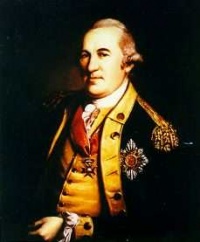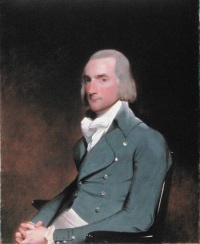From The Peopling of New York City
The German Society
There were many civic organizations established to help German immigrants in New York City. The German Society of the City of New York was by far the largest and most influential organization within the German American communities. It was founded in 1784 by early German inhabitants of New York City. Modeled after the German Society in Philadelphia, its goal was to help German immigrants settle in New York. It all started on August 23, 1784 when thirteen men met informally to discuss creating a German society in order to relieve the Churches of their charitable works. Six weeks later on October 4th everything was prepared to launch the Society. The 34 newly constituted members elected Colonel Lutterloh as president. Unfortunately, Lutteloh had some of his own agendas and decided to focus the society’s main purpose on encouraging immigration from German states. However, by December, Lutterloh had vanished and it was only until the second annual meeting in October 1785 that Major General Frederick William von Steuben was elected as the second president and Dr. John Christopher Kunze vice president.
Under the leadership of Steuben and Kunze a close relationship was established with the society in Philadelphia. The Basic Rules were revised and it was adopted in November 1787. The new version placed less emphasis on encouraging emigration and more on helping the needy German immigrants. In the new preamble, it states:
“Charity is undeniably one of the most admirable duties of life in society, and if distress and accidents of our fellow men urge upon us to assist them, we should be ever ready to alleviate such sad and crying needs. Every man who feels compassion in his heart will readily find daily an occasion to open his charitable hand and, therefore, one could demur that there be no need for a special society to meet these necessary obligations which religion and morality have so much instilled in us. Yet there are evils which require oftentimes special exertions and such are the ones the German Society has chosen to address. Experience has taught us that German emigrants who come into this State, unfamiliar with the laws, the customs and the language of the country, are not infrequently in need of support and good advice. Now since it is quite natural that they turn in such cases first of all to their countrymen who speak their language, the Society, apart from other objectives, has made it its main purpose to assist such German countrymen by word and by deed as much as it is in its power.”
After Steuben’s death, interest in the Society decreased, mostly because the Society implemented the rule that only persons of German descent or of German relations can be members of the Society. However, by 1828 the number of members and new immigrants to arrive in New York grew. In March Philip Hone was elected president and during his reign the Society made an appeal to all citizens of German birth or descent for funds. In 1832, because of the significant increase in German immigration to New York and the many problems that German immigrants faced, the directors of the Society decided to compile an account of the conditions facing emigrants on the trip and after arrival in New York. The Society published it under the German title, “Wohlgemeinter Rath der Vorsteher der Deutschen Gesellschaft in New York an Deutsche, die nach den Vereinigten Staaten von Nord-Amerika auszuwandern beabsichtigen”, made 2000 copies and send most of them to Germany.
At the annual meeting on March 1, 1837, John Jacob Astor was elected as president. He was considered at the time the richest man in the country, and when he came forward with gifts totaling $20,000, he made the condition that the money had to used to establish a permanent office with a salaried staff. Astor’s foresight placed the Society on solid footing, without which it might have been blown out of existence in the coming years of the greatest trans-ocean migration ever in human history. Astor’s example encouraged others to make the same type of donations.
Over the years, the need for the Society decreased as immigration to New York stagnated. In 1890 the Society became a part of the Legal Aid Society of New York and is still active as a welfare society for German Americans.
- Return to Civic Organizations
- Return to Germans
References
- ↑ Wust, Klaus German. Guardian on the Hudson: The German Society of the City of New York 1784-1984. New York: The German Society of the City of New York, 1984.

